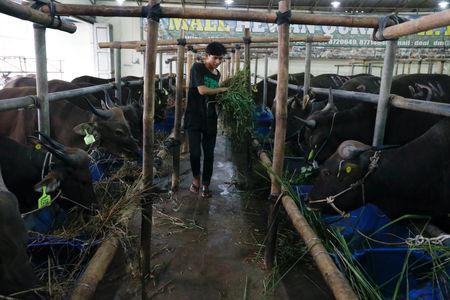By Nivedita Bhattacharjee
BENGALURU (Reuters) -India appointed rocket scientist V. Narayanan as the new head of the Indian Space Research Organisation (ISRO), the government said on Tuesday, a key role as India works to become a space superpower.
Narayanan takes over from S. Somanath, who became chairman in 2022 and has been credited with making the 54-year-old space agency more approachable and opening it up to engage with the next generation.
Former colleagues describe Narayanan, who joined ISRO in 1984, as a mild mannered but “strict” scientist with a track record of getting things done.
“The appointment is a surprise because we were expecting an extension for Somanath, but the choice makes sense, given Narayanan’s track record,” said a former ISRO scientist and colleague, who did not want to be named because he is not authorised to speak to the media.
Narayanan, who has a doctorate in aerospace engineering, will take charge as ISRO sets sights on building its own space station by 2035, and putting an Indian on the moon by 2040.
Prime Minister Narendra Modi has called on ISRO to make India a profitable space superpower, and the agency has responded by looking to work with the private sector.
The Indian government estimates its share of the market is currently just $8 billion, but it is aiming to increase that to $44 billion over the next decade.
The $400 billion global commercial space market is expected to be worth $1 trillion by 2030.
Somanath and Narayanan did not immediately respond to requests for comment.
Narayanan, who has worked on the key rocket launches such as ISRO’s Polar Satellite Launch Vehicle and led the centre that designs and develops liquid propulsion systems for the agency, will take over on Jan. 14 for a two-year term.
He was also the head of the analysis committee tasked with looking into the failure of Chandrayaan-2, where ISRO lost contact with a spacecraft it was trying to land on the moon.
The agency eventually launched the Chandrayaan-3 mission in 2023, becoming the first country to land on the rugged, unexplored south pole of the moon.
(Reporting by Nivedita Bhattacharjee and Kanjyik Ghosh; Editing by Gerry Doyle)










